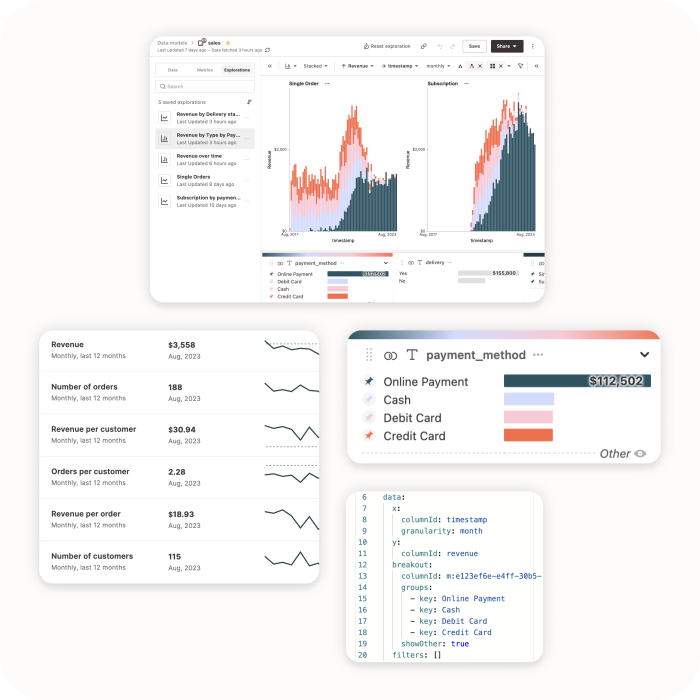Our approach
Hashboard believes that data itself is a product. And that data people are product people too.
Hashboard is an opinionated BI tool that hopes to make your organization love data again by simplifying exploration and allowing you to publish data in a consistent, high quality and beautiful way.
Our goal is to simplify: our interface, how you interact with data and how your organization thinks about data.
Hashboard is an ode to data product people everywhere.
